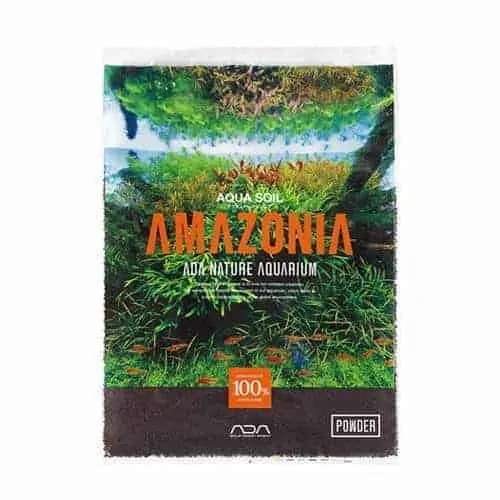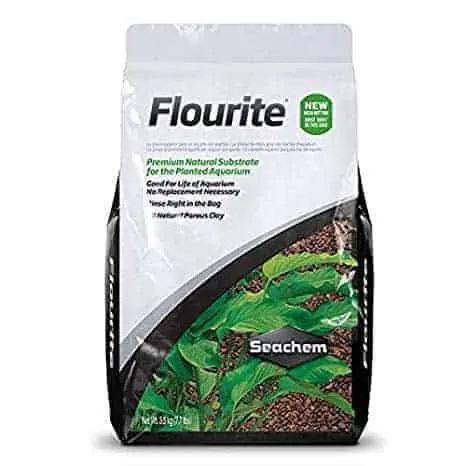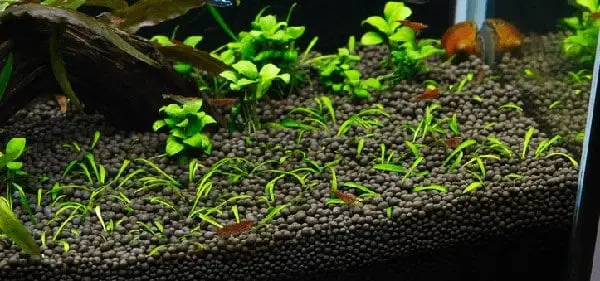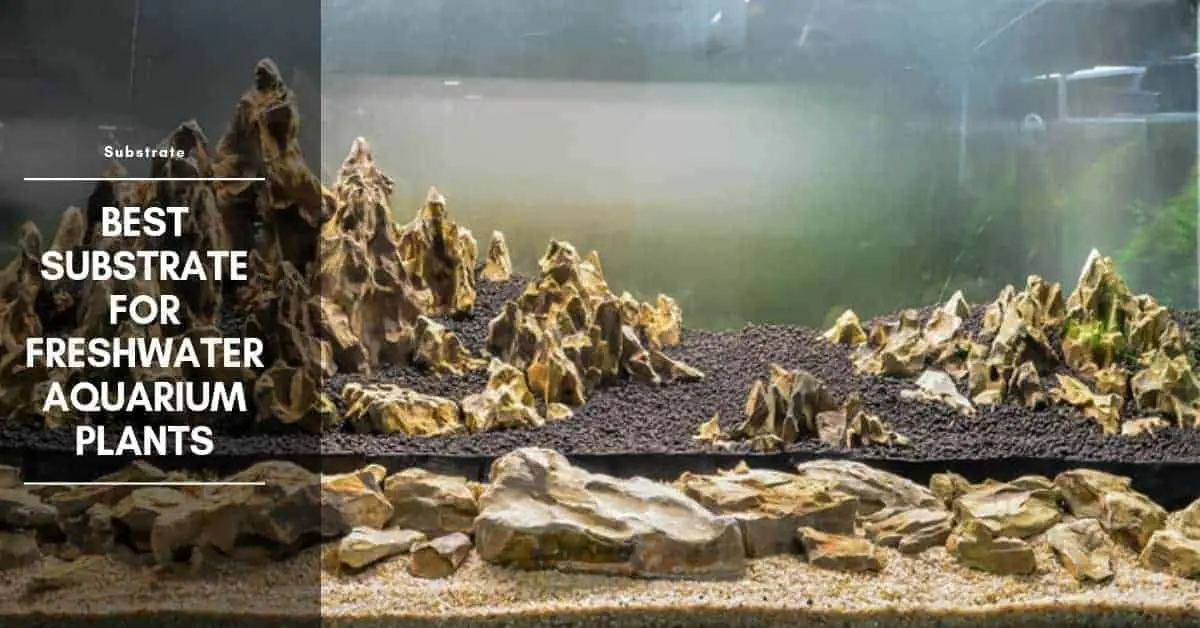Aquarium substrate is the material that covers the bottom of any aquarium. This material is great for an aquarium because it acts as a host for beneficial bacteria and creates a great environment for fish and invert that live happily.
The Substrate Is A Key Element To Any Plant Aquarium
Not to mention it looks good in the aquarium, for anybody viewing it. A good substrate can be a great source of nutrients for aquarium plant. This is important because a large number of plants on the market today, are heavy root feeders.
This means they prefer to get their nutrients from the sub-tree in the roots rather than from the water.
What is the function of the substrate in an aquarium?
The substrate performs several functions in an aquarium. It provides a place for the plant roots to take hold and supplies them with the necessary nutrients. In addition, it is colonized by bacteria that break down harmful waste products, which is important for water quality. Bottom-dwelling fish also dig through the substrate looking for food.
What do I have to take into consideration when selecting the substrate?
- The substrate should not contain any sharp-edged pieces that could hurt the fish. Callichthyid armored catfish and other fish with barbels, such as barbs, are especially liable to injure themselves when searching for food. Any wounds can easily become infected, and the fish may die as a result.
- In addition, the substrate should be lime-free because calcium hardens the water and raises the pH.
- You may only use calcareous rocks if you are keeping fish that need an alkaline pH, such as cichlids from Lake Malawi or Lake Tanganyika. You can find out if a rock contains calcium by using the hydrochloric acid test.
- Particle size and substrate depth depend on the needs of the fish. Most aquariums use sand or gravel with a particle size of 0.125 inches (3-4 mm), which is added to a depth of about 2 inches (4-6 cm). If the substrate is too fine-grained, it often becomes clogged with debris and begins to decay. This can lead to the production of highly toxic hydrogen sulfide. If the substrate is too coarse-grained, bits of food can disappear into the spaces between the gravel, decay, and foul the water.
Can I use white gravel as a substrate in the aquarium?
It is better not to use a light-colored substrate because it reflects light, and this can irritate many fish and make them skittish.
In most tropical waters, the substrate is dark. For this reason, a dark substrate is more like the natural environment of most fish. For the good of your fish, use dark gravel rather than white. This will also accentuate the colors of most fish, except for Mollies and a few other nearly black species.
[amazon bestseller=”Aquarium Substrate” items=”5″ template=”table”]
Best Substrate for Planted Tank
ADA aqua soil

Let’s look at the pros of this substrate. it’s nutrient-rich you don’t have to add anything to it right off the bag.
Uniform granule size, and it’s easy to slope, so aquascaping is easy. And with some substrates, you have to rinse it before you can even use it. You don’t have to do that with ADA aqua soil. You can just throw it right in, and fill your tank up.
So what are some drawbacks of ADA aqua soil?
first off it’s expensive, secondly, it leached ammonia into the water after you fill your aquarium for the first few weeks. I did 40 percent water changes every day for the first week, and then every other day for the second week, before I continued on my normal regimen.
It really depends if this is negative or a positive, but ADA aqua soil can lower your pH. So it really depends on what your parameters are, to begin with, and what you’re trying to keep. Due to the ammonia spikes, you may not want to add the substrate directly to an established aquarium. This may hurt your fish or invertebrates you already have.
However, there is a workaround, you can put the substrate into a bucket, add water, and perform water changes in the bucket, to remove all those leached ammonia and then you can, once the ammonia is done being leached you can add it to the existing aquarium.
Seachem Flourite

One of the pros is, it’s much cheaper than ADA aqua soil, secondly, it won’t break down over time like ADA aqua soil, or dirt or anything like that.
Flourite isn’t super nutrient-rich like ADA aqua soil and it still absorbs nutrients whether it’s through root, tabs, or even through fertilizers in the water.
The biggest drawback of Seachem Flourite is yet to wash it well before you can throw it in your tank. If you just throw it straight in, it’s gonna cloud up your tank really bad.
API STRESS COAT Aquarium Water Conditioner 16-Ounce Bottle
Tetra AquaSafe Plus, 8.45 Ounces, aquarium Water Conditioner And Dechlorinator, Model Number: 46798162681
$10.19 (as of November 23, 2025 01:26 GMT +03:00 - More infoProduct prices and availability are accurate as of the date/time indicated and are subject to change. Any price and availability information displayed on [relevant Amazon Site(s), as applicable] at the time of purchase will apply to the purchase of this product.)API TAP WATER CONDITIONER Aquarium Water Conditioner 16-Ounce Bottle
$8.48 (as of November 23, 2025 01:26 GMT +03:00 - More infoProduct prices and availability are accurate as of the date/time indicated and are subject to change. Any price and availability information displayed on [relevant Amazon Site(s), as applicable] at the time of purchase will apply to the purchase of this product.)Carib Sea Eco Complete

Positives about Eco complete, it’s not near as expensive as ADA aqua soil, you don’t have to rinse it like Flourite, and I think it looks good. The major con or drawback for a plant aquarium using Eco complete is it doesn’t have the nutrients that other substrates do.
Potting Soil or Gardening Soil

Yes, that’s right, I’m talking about the bags stuff you pick up at the Home Depot. One important tip when using potting soil or gardening soil is to avoid the soils with chemicals. Especially the ones with the white balls. Gardening soil or potting soil is a great inexpensive way to have a nutrient-rich substrate for aquarium plants.
Another tip with that, many of these soils come with extra stuff like sticks or mulch or other things that you don’t want in your aquarium. So you need to make sure you sift those things out before you place it into your aquarium.
Another thing you might need to consider if you decide to go with potting soil or gardening soil, you got a cap it. What do I need by “capped”? capping a substrate is using a second different substrate to cover up your first original substrate.
The reason why you have to do this with potting soil is its light and fluffy and it could contaminate your water if you don’t cover it up with something like a grab or something like that.
Combination of two different types of substrates
First is artificial gravel, second is sand such as pool filters sand. I’m taking these two substrates together in the same option because they’re both very cheap but they’re both inert, which means they don’t have any nutrient value for the plants.
When using these two substrates I highly recommend throwing in some root tabs. Root tabs are just a form of fertilizer that you stick into the substrate and that can feed the plants That way.
Sand Versus Gravel In Your Tank
What substrate should you use?
Specifically sand or gravel. Well, first of all, I recommend doing some research on the specific fish that you plan on keeping. Some fish require certain substrates, while others are more versatile and can live on a variety.
I’m going to talk about some general things that you need to know before purchasing your substrate. Specifically particle size, substrate depth, and substrate type.
Now with all the fish that I got, I’ve never gotten a species-specific brand that is marketed to make your fish much healthier. Even my with cichlids, I only use pool filters sand, and they are just fine.
So, in my opinion, I recommend getting a generic substrate, rather than a well-known brand to save some money. This is obviously not the case if you have a saltwater aquarium because the substrate has special trace elements within them to support the fish.

Substrate Particle Size
Now let’s talk about the positives and negatives of different particle sizes.
If your aquarium has a large gravel pebble type substrate, there are some good and some bad things about it.
First of all, if it is large enough, a lot of algae and bacteria will grow on them, which can be good because it will stay out of sight for the most part, and help clean the tank. It can be a very good biological filter.
Also, many people prefer the look of larger gravel. Another benefit, it is easier to vacuum through the gravel to get all the junk. Now on the bad side of large particle sizes, first of all, if you have a fish that spends a lot of time on the bottom, or a fish that is very sensitive in general, larger gravel might not be a good choice.
For example, there have been many cases when people skiing rates
Also, fish like discus who are sensitive could easily get scratched up by the sharp edges on the gravel.
Another negative is that food can be lost in the deep crack of the gravel and rock if you don’t siphon it out. But it does keep your tank looking nicer for a little bit longer.
The Positive And Negatives Of A Smaller Particle Size.
Sand has some good things about it as well. It can be sifted and easily moved around by fish with no injuries. Many fish like to hide under the sand, and many sift through it to eat such as African cichlids.
There are no cracks for food to get lost, and although it seems to get dirtier faster, actually just keeps the dirt on top rather than covering it. Although it may be a little bit more work to make the tank look perfect all the time.
It is much healthier for your fish because you can see and make sure that you get all the leftovers cleaned up.
Now some negatives about sands, first of all, it cannot be as good of a biological filter, as the particles beneath the surface of the sand are suffocated and deprived of oxygen. And therefore cannot host aerobic bacteria. This can be less of the controller of your nitrates and may require some more consistent maintenance.
Now that you understand a lot about the particle sizes of the substrate, let’s talk about the depth.
Substrate Depth
The deeper your substrate goes, the more maintenance it will require. If your substrate is very deep, fish food and waste can be composed and turn is too toxic nitrates and eventually kill your fish if it builds up enough. Deeper substrates may be necessary for burrowing fish.
Shallower substrate does not post as much bacteria and is, therefore, less of a biological filter but it is easier clean. I think that a 1.5-2 inch sand bed is the best substrate in general.
I like that more because it is also more natural for cichlids and other fish, and they really enjoy sifting through it. It promotes some natural behaviors.
Also, you can see breathing pits that they dig out when they try to impress their tank mates. It is really fun to watch and I definitely recommend it.
Conclusion
Even if you go with another option for your substrate in your plant aquarium, keep root tabs in mind, because they’ll be a great advocate in 1-2 years when your nutrient-rich substrate is exhausted. You can use through tabs to feed your plants instead of replacing your substrate altogether.
Now that we’ve discussed several types of substrates for your plant aquarium, how do you choose which one is right for you? first I consider cost, how much are you willing to put into it.
I consider how much of a hassle is the substrate to work with. You’re gonna have to do all kinds of work to get it in there, and then all kinds of work to make sure it’s still feeding the plants.
To me, it’s not really that worth it and another reason is it’s got to look good for you. You the one, it’s your tank, you’re supposed to enjoy it. And you have to keep in mind, plants are living things too.
You wouldn’t throw a fish into the tank and not feed it. Why would you do the same thing to a plant?
So regardless of what you choose for a substrate, you should be able to feed your plant with nutrients whether it’s a substrate such as a ADA aqua soil or whether it’s a pool filter sand and you’re throwing in root tabs to help feed the plants.
If you’re thinking about starting a plant tank, hopefully, this has shed some light on some substrate options as well as what to consider when you’re trying to make a choice.

Hi, my name is Sean, and I’m the primary writer on the site. I’m blogging mostly about freshwater and saltwater aquariums, fish, invertebrates, and plants. I’m experienced in the fishkeeping hobby for many years. Over the years I have kept many tanks, and have recently begun getting more serious in wanting to become a professional aquarist. All my knowledge comes from experience and reading forums and a lot of informative sites. In pursuit of becoming a professional, I also want to inspire as many people as I can to pick up this hobby and keep the public interest growing.
Read more about Sean.
Please join also my Facebook group.




















